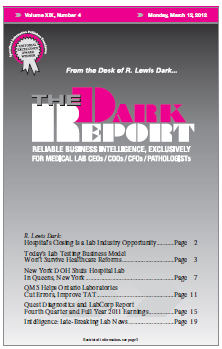CEO SUMMARY: In Brampton and Etobicoke, Ontario, the hospital laboratories of William Osler Health System are using the quality management system of ISO 15189 to stay ahead of two powerful trends. Combining the QMS with Lean methods allows the labs’ management and staff to continuously improve performance in four important dimensions: decreasing turnaround times, reducing […]
To access this post, you must purchase The Dark Report.


